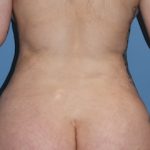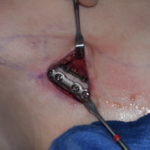Background: Turner’s syndrome is a well known congenital chromosomal condition (XO) in females that produces a variety of physical defects one of which is the webbed neck. The webbed neck or neck bands are very visible and are a major component of what makes the condition very identifiable. While there are no improvements in neck range of motion by operating on the neck webs, a reduction in their appearance has major aesthetic and psychological benefits.
Webbed neck surgery has been done for a long time and, while it can be effective at reducing the appearance of the webs, it does so at the tradeoff of scars. The historic approach to webbed neck surgery places these scars along the lines of the web which many patients understandably may not find an acceptable tradeoff. There have been variations to the lateral webbed neck approach that pushes the scar more posteriorly so that it is not immediately visible from the front view. But it is still a pretty long scar that is very visible from the side and back view and is prone to significant scar widening as would be expected when they scar ends up going into the upper back.
The posterior approach to webbed neck surgery focuses on putting the scar in a less visible location in the central neck location of which part of that scar ends up in the hairline. This technique works by excising tissue from the back of the neck and moving the lateral neck tissues inward. (tissue transposition) This reduces the neck webs very much like lower facelift surgery helps reduce the central band of tissue in a patient with a turkey neck. While effective at making a better scar location and reducing the webs there is going to be some tissue relaxation secondarily. Thus some webbed neck patients may benefit by a secondary effort at additional posterior neck excision for further webbed neck improvement.




Key Points:
1) The indirect posterior webbed neck surgery procedure relies a tissue transposition effect of which some secondary tissue relaxation is to be expected.
2) The indirect webbed neck result can be further improved by secondary posterior neck excision.
3) The posterior neck scar heals well and is an acceptable tradeoff in a female.
Dr. Barry Eppley
World-Renowned Plastic Surgeon








